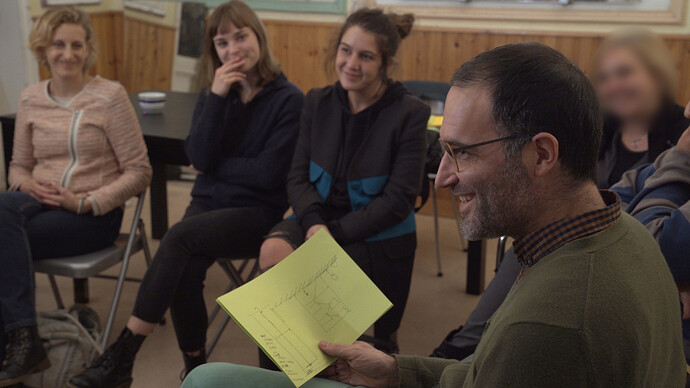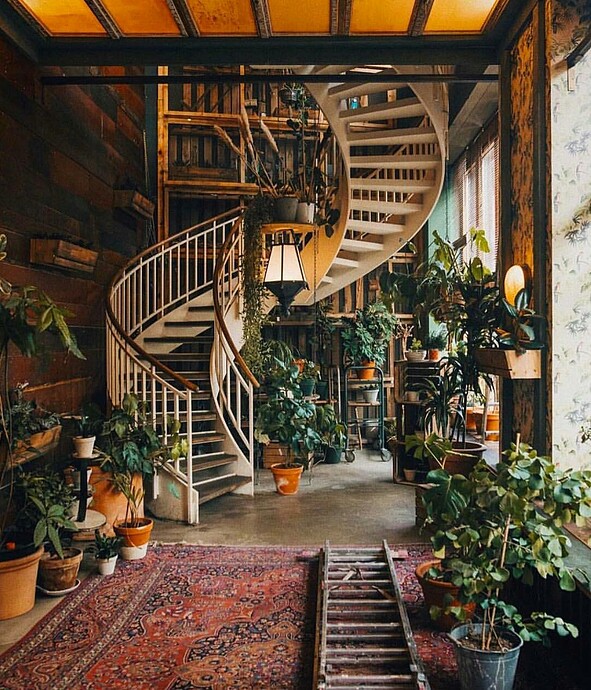Thursday 28th Nov, the Reef community workshop series was attending its 3rd session at Metrolab Brussels
The community was strengthened by the inputs of its core members from Manuel to Ugne, Vincent, Cynthia, Louise, Noemi, Alberto, and Matthias.
Plus, this 3rd workshop welcomed aware participants in fields related to coliving such as Matthew from conscious coliving, Kai from Happy Pigeons presented on edgeryders by Noemi (Happy Pigeons Co-living in Berlin). We also welcomed Luk co-founder of Woon Coop. A cooperative that developed a mixed model between rental and ownership active in Belgium.
I am deeply thankful to everyone who attended this workshop.
I am also thankful for everyone who feels a sense of belonging for the Reef community whether you had a chance to attend a workshop or not.
This post is an open door to put perspective on the concrete ideas we expressed !
@noemi facilitated us the way to collectively shape the Reef onto 3 main areas :
- Living Together
- Green behaviors
- Governance
Feel free to endorse or not, comment, spread knowledge and references. Sharing is caring !
Living together
From the Kitchen, to sewery courses, to knowledge sharing and time-banking, the codesign sprint was a fruitful discussion to draw a qualitative map of all the collective habits that could be endorsed in the Reef.
Things we agreed on
The Reef would be modulable to get space for privacy, intimacy, and common areas. Yet, this requirement for modularity doesn’t tell if the building has to be vertical or made with separate buildings. Accessibility for everyone is a common criteria. Here we consider both people with disabilities, temporary guests, diversity of households typologies, background, experiences, skills and potentialities to expand.
The Reef would create a space for a third party that we define by now as a facilitator or a mediator. This person would be someone standing on the first line and trustworthy.
Green behaviors
1. Shared green behaviors
Everythings starts with the skills and passion we got in the first place. If you practise yoga, then let’s practise yoga in a common area and present this practise to others inhabitants and users of the place ![]()
Green is also about being savvy. Kitchen issues offers a room to create modular initiative (open kitchen some days, collective cooking, récup, table d’hôte, workshops…).
2. Time is community
How could possibly The Reef offer more emphasis on the time and skills people offer to the community ?
Initatives such as time-banking have been raised as relevant examples.
You can get an explanation here on the website of les grands voisins in Paris. Basically they created a trocshop, you pay workers and clothes with either time for the community and/or metro ticket.
3. The Reef as a vehicle for Decarbonization
How could The Reef possibly be self-sufficient energetically wise ?
To go deeper on that topic, @matthias initiated an inventory of technical solution for The Reef and beyond.
Governance
Matthew who just released the 1st edition of the more than edgy coliving insights and @alberto talked about governance structure for the Reef.
Alberto compiled all this in-depth discussion in a topic on edgeryders.
Just to sum up and get clear ideas
coliving concerns primarily businesses providing branded multi-party residential
products with a service layer. Most of coliving experiences are focused on commercial and rental model that have the opportunity to make a market impact and reach a large number of people.
Are Not concerned by this definition : student accommodation and, with some exceptions, intentional communities and co-operatives which are typically driven by owner-occupiers without a profit motive.
-
PROS
people rent the space from the operator, and they tend to get an inclusive service to run the rent, utilities, maintenance, cleaning, laundry -
CONS
when the service is too perfect then the level of convenience is high and the necessity of community building is weakened
cohousing : People buy a living unit which is part of a larger context; sometimes they even develop it together
-
PROS
strong community spirit -
CONS
easy to cash in but difficult to cash out if needed
What to keep in mind ?
- The Reef governance model might draw its own line between coliving qualitative living and co-operative ownerships
- To prevent negative aspects of both coliving and cohousing The Reef governance model should prevent high turnover rate (like in traditionnal coliving) and investors insecurities (like in cohousing)
- Some of the Reef convenience would be DIY and community based
- A broader perspective on cooperative models allows to make a difference between investing bodies and effective inhabitants and users of The Reef
The Reef community thanks Metrolab Brussels for kindly hosting us in their wonderful offices.
–
Edgeryders inputs on the Reef
- @Noemi Notable points from Workshop 3: CoDesign Sprint - #9 by noemi
- @Alberto Co-living, co-housing and first thoughts of the Wooncoop model
- @matthias Notable points from the Green Building Tech Workshop - #3 by trythis
This activity is supported by






